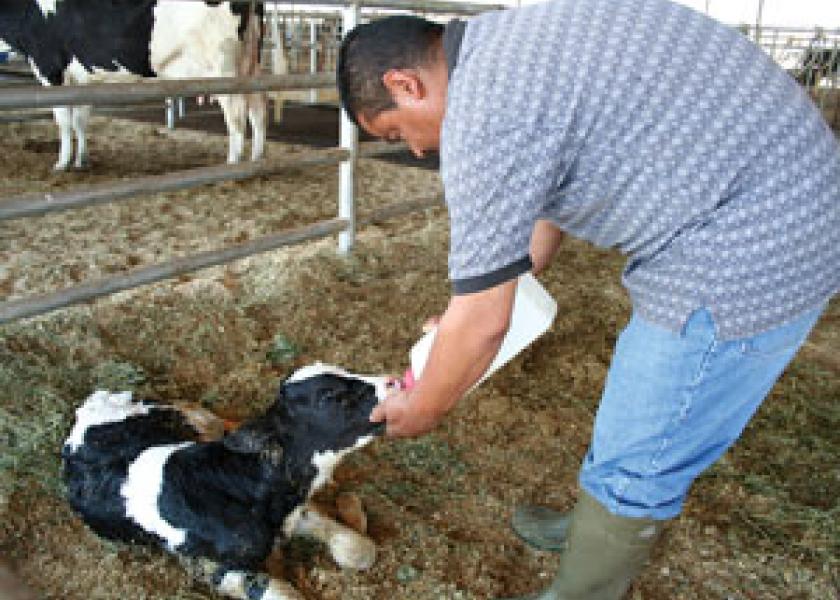Johne’s Lessons Learned

Long-term research beginning to yield answers
After more than a decade of study, veterinarians are starting to sort out what works and what doesn’t in controlling the spread of Johne’s disease.
Because Johne’s disease, technically called Mycobacterium avium subspecies paratuberculosis, is such a slow acting disease, studies take years. There is no silver bullet.
Researchers from USDA’s National Animal Disease Center in Ames, Iowa, and the Universities of California, Minnesota and Wisconsin have summarized the results of 21 studies. Here’s what they’ve learned about Johne’s so-called "critical control points" in herd transmission.
1. Maternity pen management. Research suggests that dairy calves are most susceptible to Johne’s infection within the first few hours of life. So it’s been postulated that having individual calving pens that are cleaned between calvings should reduce exposure and infections. In 2005, three Minnesota herds participated in a study where roughly half of the 456 heifer calves were born in individual maternity pens cleaned between uses and half were born in multiple-cow calving pens. There was no measurable difference in rate of disease or death of the calves. Follow-up testing was done to determine if there is any difference in Johne’s infection as the cattle matured, with final results pending.
|
| |
2. Off-site heifer raising. In 2003, a 3,100-cow California herd raised about 800 calves on the dairy (Cohort 1), kept 800 calves on-site until five months of age and then sent them to a heifer raiser until 20 to 22 months of age (Cohort 2), and sent another 800 calves off-site from the second day of life until 20 to 22 months of age (Cohort 3). Preliminary results through second lactation show a slight decrease in the percentage of Johne’s-infected cattle the longer they were raised off-site. Cohort 1 cattle had an infection rate of 4.6%; Cohort 2, 3.6%; and Cohort 3, 2.3%. Results are pending through third lactation.
3. Colostrum management. University of Minnesota researchers have developed a protocol for the on-farm heat treatment of colostrum that heats milk to 140°F for 60 minutes to reduce or eliminate pathogens while preserving immunoglobulin G (IgG) proteins. In a 2007 study with 1,102 newborn heifer calves, IgG levels were significantly greater and disease rates significantly reduced for calves fed the heat-treated colostrum versus those fed raw colostrum. Johne’s test results are pending.
Commercial colostrum replacers were used in a 2003 trial in 12 Minnesota dairy herds. In the controlled field trial, 433 cows were fed either raw maternal colostrum or a commercial colostrum replacer. Twelve percent of those fed the raw colostrum were later diagnosed with Johne’s compared to 8% of the colostrum replacer–fed calves. "Survival analysis indicated a 44% reduction in the hazard of Johne’s infection for the colostrum-replacer group," says Sandra Godden, a veterinarian with the University of Minnesota.
4. Milk feeding programs. A 2002 study with 438 heifer and bull calves were fed pasteurized waste milk or a commercial 20:20 milk replacer until they were weaned. There was no difference in the risk of Johne’s infection. But calves that were fed the pasteurized milk had improved milk production in their first two lactations plus improved longevity in the herd.
"These results suggest that feeding pasteurized waste milk can be an effective part of a comprehensive Johne’s control program," Godden says.
5. Adult cattle management. Results of testing replacement heifers in a 2004 study show that heifers raised in low-risk Johne’s herds and then introduced to a Johne’s-infected herd were less likely to test positive than herdmates raised in infected herds. But this reduction in test positivity is lost through time in the herd, researchers say.
6. Vaccination. In a 2009 Wisconsin trial, 162 cows were vaccinated with a killed Johne’s vaccine and then compared to 145 unvaccinated herdmates. Vaccinated cattle had a lower rate of fecal culture–positive tests, were less likely to develop clinical Johne’s disease and, if they did, took longer to develop clinical Johne’s.
Vaccinated cows also stayed in the herd longer, but the overall herd survival average was not different, nor was total milk production or time to conception per lactation. Vaccination also decreased whole-herd fecal prevalence, suggesting that vaccination can be an effective part of a Johne’s control program.







